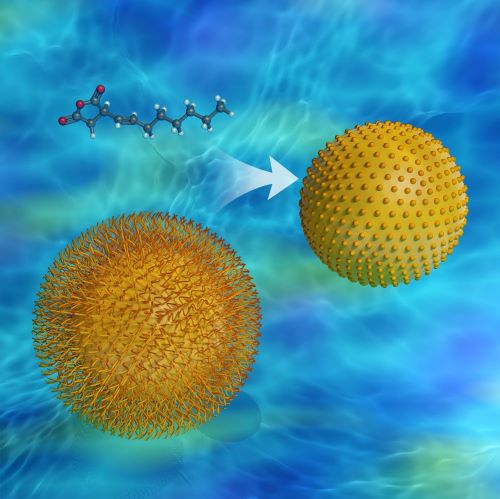Agent of Change

Studying small-scale particles can lead to huge advancements for science and industry.
Nanomaterials have been heralded as the “world’s next miracle product,” with potential to advance biomedicine, food safety, and energy storage. At the nanoscale, particles are measured in nanometres (one billionth of a metre). For reference, a single sheet of paper is about 75,000 nanometres thick. At that scale, atoms behave differently. Materials exhibit unique properties that can be harnessed to achieve technological advancements that influence our day-to-day lives and well-being, from sunscreen to fertilizers, and even cancer treatments.
As co-director of the University of Guelph’s Centre for Sustainable Nanomaterials Innovation (CESNI), physics professor John Dutcher is taking the exploration of nanomaterials to the next level. Dutcher uncovered the potential of phytoglycogen, a nanomaterial produced from sweet corn, as a viable non-toxic alternative to engineered (non-natural) nanomaterials. Because nanomaterials are small enough to penetrate the tissues of living organisms, there are concerns about the impact of engineered nanomaterials on human and environmental health. Dutcher has conducted several studies that highlight the structural, hydration, mechanical, and flow properties of phytoglycogen that make it an ideal non-toxic alternative. Now, Dutcher and his research team are examining ways to broaden phytoglycogen’s range of applications.
The researchers noticed that phytoglycogen nanoparticles are amenable to a range of chemical modifications that can change their fundamental properties. To test this assumption, Dutcher and his research team modified phytoglycogen with octenyl succinic anhydride (OSA), a common food-grade modification of starch. In a series of neutron scattering experiments with collaborators at Oak Ridge National Laboratory, the scientists uncovered differences between the structure and hydration of the modified and native particles, the implications of which will be explored further through CESNI. Remarkably, the scientists discovered that the modified particles provided new insight into the properties of the native particles, allowing the determination of the length of short chains glucose that decorate the particle surface.
“Our experiments demonstrate not only how chemical modification of phytoglycogen nanoparticles can lead to changes in their properties but also provide new information about the particles themselves,” says Dutcher. “Further study into how we can harness these new properties could provide insight into potential for novel scientific and industrial technologies.”

Hydrophobic modification of phytoglycogen nanoparticles with OSA causes the glucose chains on the particle surface to collapse in water, forming small "seeds" on the particle surface.
This work was supported by the Natural Sciences and Engineering Research Council of Canada.
J. Dutcher holds a College of Engineering and Physical Sciences Research Chair in Novel Sustainable Nanomaterials.
Simmons J, Nickels JD, Michalski M, Grossutti M, Shamana H, Stanley CB, Schwan AL, Katsaras J, Dutcher JR. Structure, Hydration, and Interactions of Native and Hydrophobically Modified Phytoglycogen Nanoparticles. Biomacromolecules. 2020. doi: 10.1021/acs.biomac.0c00870.